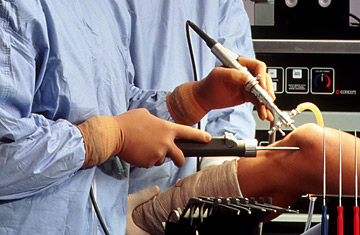
The conclusion of recent study on chronic pain after knee replacement states “the prevalence of pain after TKR is high, with 25% of patients reporting moderate-severe pain at 1-year after TKR.”. Details of the study are discussed below.
Introduction:
Chronic joint pain is the primary reason for individuals electing to undergo TKR and therefore pain relief is an extremely important outcome after surgery. Although the literature suggests that TKR produces excellent pain relief, the prevalence of chronic pain after TKR is often masked in the reporting of mean pain scores. The aim of this study was to explore the prevalence, impact and onset of pain at 1-year after TKR.
Methods:
243 patients (251 knees) were recruited into a multi-centre randomised controlled trial comparing the outcomes of the Kinemax Plus fixed-bearing and mobile-bearing implant. Patients were assessed pre-operatively and then 3 months, 1-year and 2-years post-operatively. At each assessment time patients completed the WOMAC, KOOS quality of life scale, SF-12, American Knee Society Score, Satisfaction Scale for Joint Replacement Arthroplasty and a clinical examination. As part of the clinical assessment patients were asked to rate the pain in their knee as none, mild, occasionally moderate, continually moderate or severe.
Results:
To date, 240 knees have reached their 1-year follow-up. Complete data regarding pain ratings was available for 198 patients. The mean age of patients was 68 years (range 40-81) and 52% were male. At 1-year after TKR, 13% of patients had occasionally moderate pain, 6% had continually moderate pain and 6% of patients had severe pain. In total, 25% patients reported moderate-severe pain at 1-year after TKR. 60% patients with pain at 1-year post-operative also experienced moderate-severe pain at 3 months post-operative. Using a Mann-Whitney U test, patients with moderate-severe pain at 1-year after TKR had significantly worse physical function (p<0.001), knee-related quality of life (p<0.001) and mental health scores (p<0.05) than those patients with no-mild pain.
Conclusion:
This study suggests the prevalence of pain after TKR is high, with 25% of patients reporting moderate-severe pain at 1-year after TKR. Pain experienced at 1-year post-operative was most frequently preceded by pain at 3-months post-operative, suggesting that for many patients a pain-free period after surgery is not experienced. The pain present at 1-year after TKR affected several domains of life, including functional ability, quality of life and mental health. Future research will focus on developing a pre-operative screening protocol to identify patients at risk of chronic pain after TKR.
If you are suffering from long term knee pain, there is a highly effective alternative.
